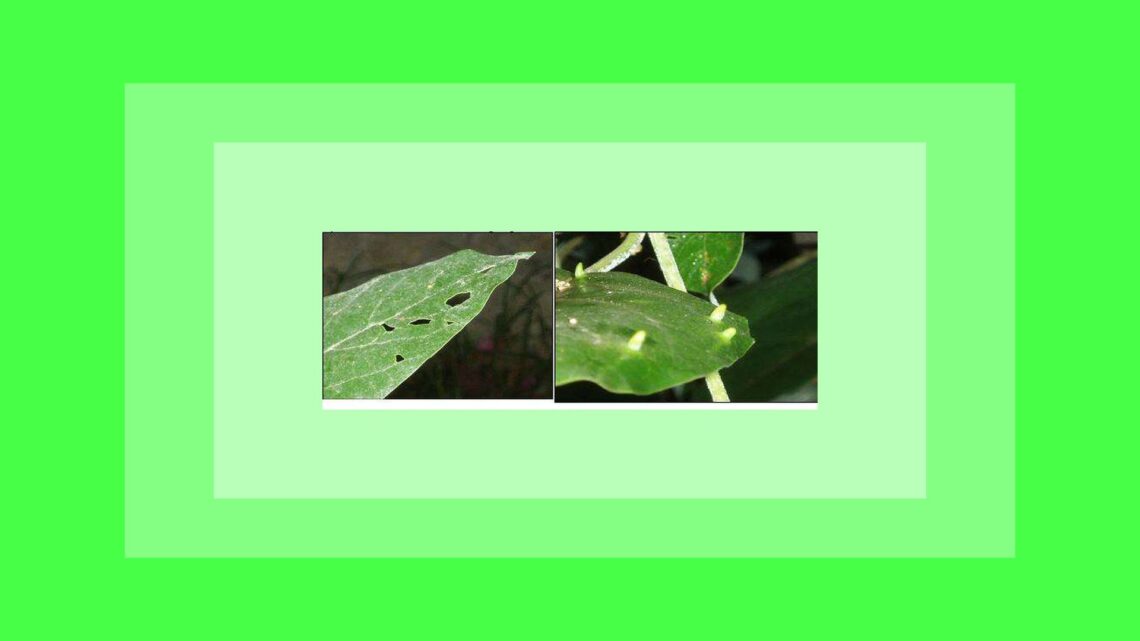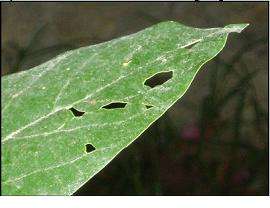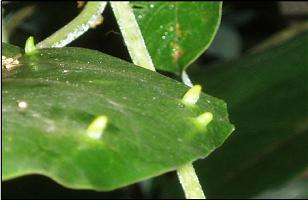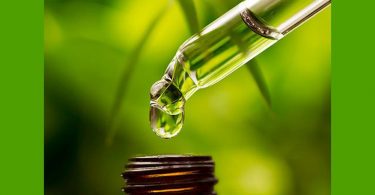The climate change exerts pressure on the capacity of worldwide agricultural production and poses new challenges for agriculturists. The traditional agricultural industry prepares resistant varieties, amplifies the capacity to produce in protected places such as greenhouses and shade houses, and investigates new transgenic organisms.
Agricultural allopathy, which finds its maximal expression in the green revolution, destroys many bacteria, viruses and aphids momentarily, but these adapt rapidly and create resistance, provoking the necessity to produce new and more powerful agrochemicals to combat them.
The current predominating traditional style of production, derived from the green revolution, is not sustainable. Moreover, it is impelled by economic models and interests which cause the agriculturists to be financially dependent on the manufacturers of seed and agrochemicals, which are used to control plagues and diseases. These conditions force the agriculturists to repeatedly purchase the genetically modified seeds. Re-sowing is impossible despite previous yields, thereby creating a kind of agro-dependency.
Agro-Homeopathy, a relatively new science, uses a different model, which is economically practical and amenable to very rustic conditions. It is socially beneficial and, most importantly, it’s results are easily replicable (Barberato. 2000).
It strengthens the plant’s own vital force, balances the soil and works at solving the ailments permanently through a systemic approach, and without any collateral effects.
In the same way as it occurs in each living organism, the plant possesses a genetic memory which is continually enriched. An abrupt modification of its genetic material not only produces a different and genetically modified organism, but leaves a trace of this genetic change in its cellular memory.
Agro-Homeopathy not only treats the disease symptoms of the plant and performs preventive actions, but can also treat traumas retained in the biological memory of the plant, which resulted from conditions such as forced hybridization, moving to places outside their natural habitats , or exaggerated fertilization that maximizes production to the extreme.
Agro-toxicals and chemical fertilizers contain a high chemical content and low energy, and when applied to an organism, this causes influences of low energy. Its internal energy will be in imbalance or this will generate the manifestation of symptoms. Homeopathic substances however, are highly energetic and contribute to the process of cure, and organisms treated homeopathically are less vulnerable to diseases (Andrade, 2000).
If we consider Rudolf Steiners’ contributions as the first indications of agro-homeopathy, then it must be understood that many of his concepts are nothing more than reinterpretations of texts written by the old alchemists, Paracelsus being one example. Steiner himself had considerable knowledge of mathematics, physics and chemistry, but his training in agriculture was feeble. Moreover, Steiners’ approach results in a little happy mixture of religion and science, a fact which is hardly acceptable for scientists (Tate W., 1994).
Studies made by the Austrians Eugen and Lili Kolisko and many other investigators before them, indicate a reliable scientific line of agro-homeopathy, allowing for the objective validation of experimental results (Eugen Kolisko and Lili Kolisko., 1978).
Agro-homeopathy is based on scientific investigations during the last ten years. It revolutionizes the static panorama of agriculture, immersed within the lineaments of the green revolution in several aspects:
Dilution and succussion, two indispensable parts for the potentization of substances into homeopathic remedies, demand little as regards to the technology they require, apart from costs of laboratory equipment and sophisticated devices. Moreover, a very important contribution of Agro-homeopathy is that it neither attacks nor affects the environment, but instead, lends to the re-establishment of the ecological equilibrium. Experiments with homeopathically applied herbicides and other artificially synthesized substances were made, and where found to function as growth promoters. That is to say, agro-homeopathy is not necessarily a synonym of an organic, eco-friendly or biodynamic approach, it is only a tool.
Agro-homeopathic preparations can be made from synthesized substances, but do not cause anything residual or produce damage to the environment.
The majority of efforts of today’s biotechnology concentrates on genetically modified organisms, whereas, agro-homeopathy is usually grouped with the field of organic production and other sustainable or alternative systems of agriculture ( as if it were not biotechnology).
It must be noted that agro-homeopathy in the full sense of the word, is also a biotechnology, generally an eco-harmonic biotechnology, which is much more secure in comparison to the industry of transgenics.
In Mexico, the political confusion about whether agro-homeopathy is a biotechnology or not, leaves it outside the financing dedicated to this field. Other countries like Brazil, India and Cuba place a greater emphasis on a natural approach and are willing to expend resources on agro-homeopathy. Thus, they have groups of investigators in this field, and produce applicable results for those countries. (Castro, Casali, 2000).
One of the reasons for the relative marginalization of agro-homeopathy, is that it is based on practical experiences. Until now, there has not existed, despite several efforts, a generally accepted theory which could explain its mode of functioning. (Guajardo Bernal G., 1996; Benveniste J, Aissa J, Litime MH., 1992).
Verified scientific results on plants validate agro-homeopathy’s capacity to modify growth, plant behavior, quantity and shape of fruits, abundance of foliages amongst others, and capacity to control the majority of known plagues and diseases. (Khanna, K. K. y Chandra, S. 1976; Khanna, K. K. y Chandra, S. 1978; Silva, E. P., 2002; Rossi Fabricio, 2005, Rivas E., Cecea C., Guajardo G.; 1996, and many others).
Its low cost in comparison to synthesized chemical agents traditionally used on the farm, qualifies it as a tool with positive social impact. It can simultaneously affect the economic interests of both sellers and manufacturers of agrochemicals.
Damage on the leaves of Avocado (Persea americana) produced by Gall mites (Eriophyes sp.), before and after the application of Calcarea carbonica 6CH.
For want of a generally accepted theory that supports agro-homeopathy, and because of the competing economic interests, agro-homeopathy has, until now, concentrated on the small producers of alternative and subsistence agricultural systems.
Small and non-industrialized agriculturists hardly achieve the benefits of the green revolution, whose logical extension are genetically modified organisms. Small agriculturists utilize a labor intensive production system whose economic scheme does not leave the opportunity to buy agrochemicals, and they are forced to look for alternative systems for the control of plagues and diseases.
Moreover, small agriculturists are a possible group for the application of agro-homeopathy due to it being easily applicable, even in rustic conditions (Ruiz Espinosa Felipe, 2001).
The possibility of working with nosodes, plants and materials of each region, facilitates its application. In isolated places, where people do not have access to a homeopathic pharmacy or a specialized laboratory, it facilitates a means to prepare homeopathic remedies from nearly every substance. (Ruiz E., F.J.S.Castro I., 2003).
Climate change will modify our approach to agriculture. One faction will grow in protected areas, and/or will have access to hybrid or transgenic seeds and utilize agrochemical input. But most agriculturists will have to adapt to the further changes in climate conditions and contend with increasing economic precariousness. They will have to utilize both low-cost tools and tools of high technological-social accessibility. This can be achieved though agro-homeopathy.
The displacement of plagues from certain latitudes to other regions, resistance to low or high temperatures and drought or flooding, are just some of the effects which will require our attention.
The future success and survival of agriculture and possibly the survival of the human race, will depend on the capacity of plants and other organisms, including humans, to be able to rapidity adapt to these changes.
The allopathic approach which is based on the use of agrochemicals reduces the ability to manage fertilization and to control plagues and diseases of plants. Making agriculture and plants increasingly dependent on human interventions, generates increased production costs. (Altieri Miguel A., 2003).
Meanwhile, agro-homeopathy permits constitutional treatment, which acts deeply on the living organism, and permits the stimulation of the auto-regulative adaptation of organisms to new conditions without creating dependency of the plants on repetitive human interventions or increased production costs.
Agro-homeopathy will be one of the most expanding tools on farms in the near future, attending mainly those majorities which are unable to use the green biotechnology and the allopathic approach in agriculture.
References
Altieri Miguel A. (2003). Dimensiones ticas de la crtica agroecolgica ala biotecnologa agrcola, Acta Bioethica, ao/vol IX., nmero 001, Organizacin panamericana de la salud, Santiago, Chile pp. 47-61
Andrade, F. M. C., Casali, V.W.D. (2000). A homeopatia e as plantas medicinais. In: Seminrio
Brasileiro sobre homeopatia na agropecuria orgnica,l., 2000, Viosa, MG. Seminrio. Viosa, MG:
UFV, p. 43
Barberato, C. (2002).Homeopatia tambm na agricultura. Jornal Rural, Londrina, n. 1325. p. 8.
Benveniste J, Aissa J, Litime MH.(1992). Transfer of the molecular signal by electronic amplification. FASEB J. 8 (4): Abs. 2304
Castro, D . M DE.; Casali, V.W. D. (2000). Perspectivas de utilizao da homeopatia em hortalias. In: Seminrio Brasileiro sobre homeopatia na agropecuria orgnica, l. 2000, viosa, MG. Seminrio… Viosa, MG:UFV, p. 27-33.
Guajardo Bernal G., (1996). Modelos biocibernticos para explicar la curacin en homeopata. Boletn Mexicano de Homeopata. Vol. 29, no.1
Khanna, K. K. y Chandra, S. (1976). Effect of some homeopathic drugs on the spore germination of four isolates of Alternaria Alternata. Indian Phytopatology. Vol. 29. Allahabad, India. p. 95.
Khanna, K. K. y Chandra, S. (1976). Control of tomato fruit rot caused by Fusarium roseum with homeopathic drugs. Indian Phytopatology. Vol. 29. Allahabad, India. pp. 269-272
Khanna, K. K. y Chandra, S. (1978). Homeopathic drugs controls fruit rot caused by Pestalotia
mangiferae Henn. Experentia (Basel) 34 (9). Allahabad, India. p. 1167.
Kolsko, Eugen, and L. Kolsko. (1978). Agriculture of tomorrow. Bournemouth, Eng: Kolsko Archive.
Ruiz Espinosa Felipe. de J.; S. Castro. I. (2003). Fitoexperimentacin pura con refrescos. Memoria del Seminario de Avances y Resultados de Investigacin del Programa de Agricultura Orgnica. Chapingo, Mxico. pp. 47-50.
Ruiz Espinosa Felipe. (2001). Agrohomeopata: una opcin ecolgica para el campo mexicano. La
Homeopata de Mxico. Vol 70 Julio-Agosto, No 613; 110-116.
Rossi Fabricio, Aplicao de preparados homeopticos em morango e alface visando o cultivo com base agroecolgica, Escola Superior de Agricultura Luiz de Queiroz (ESALQ, Piracicaba 2005
Rivas E. , Cecea C. , Guajardo G.; 1996, Accin de 9 frmacos homeopticos sobre la germinacin de esporas de Alternaria solani y semillas de trigo y tomate. Boletn Mexicano de Homeopata,; 29 (2): 44- 46.
Silva, E. P., Efeito do medicamento homeoptico Sulphur em algumas variveis do crescimento e
produtividade de rabanete. Maring, 2002. 32f. Monografia (Especializao em Botnica)
Departamento de Biologia, Universidade Estadual de Maring.
Tate W., (1994). The development of the organic industry and market: an international perspective en Lampkin N. y S. Padel, 1994. The economics of organic farming: an international perspective, Wallingford, CAB International, pgina 11-26.
————————————-
INSTITUTO COMENIUS
Direccin Administrativa:
Ave. Eugenio Garza Sada No. 427 Sur
Pabelln Tec Piso 1, Local 20
Colonia Altavista
C.P. 64840
Monterrey, N.L. MEXICO
Tels: +52 (81) 8369-1650







hi, how prepare the agriculture inputs like homeopathy method?